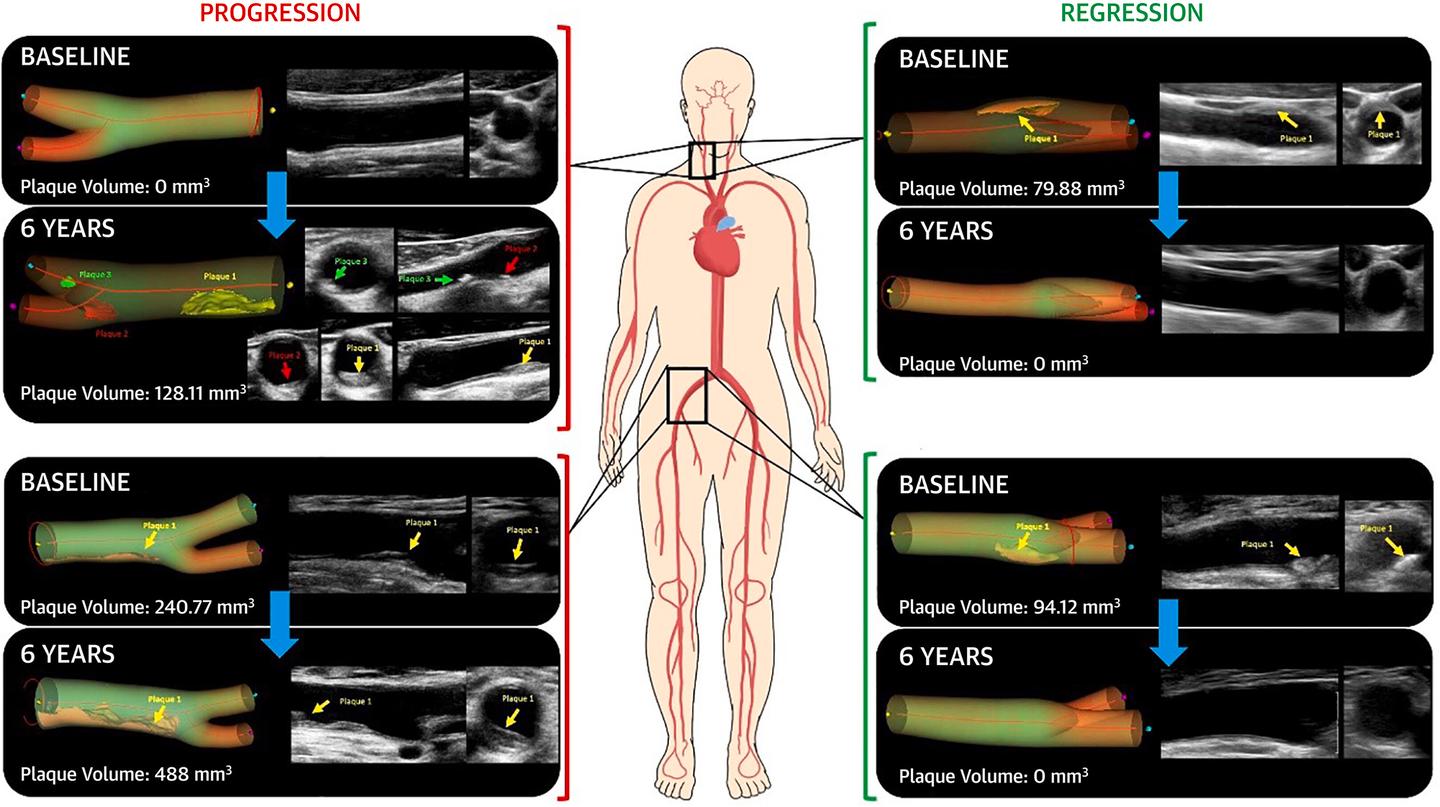A new study has found that moderate increases in blood pressure and cholesterol have a greater impact on arterial plaque, or atherosclerosis, progression in 40-year-olds than in people over 48. The findings suggest that intervening to address these risk factors earlier may slow or stop the disease.
Despite advances in medicine, cardiovascular disease linked to atherosclerosis continues to be a leading cause of death. Because atherosclerosis often begins early in life and develops without obvious symptoms, detecting the disease during its subclinical phase is key to initiating timely preventive measures to slow its progression.
A new study by researchers at the National Center for Cardiovascular Research (CNIC) in Spain investigated early subclinical atherosclerosis in middle-aged asymptomatic individuals to determine the factors that influence it.
“In this study, we show that moderate increases in blood pressure and cholesterol have a much more pronounced impact on atherosclerosis progression in young people,” said Borja Ibáñez, one of the study’s co-authors.
The researchers recruited 3,471 participants with no history of cardiovascular disease from the Progression of Early Subclinical Atherosclerosis (PESA) study. The participants, who had a baseline age of 40 to 55, underwent 3D vascular ultrasound (3DVUS), an imaging technique that provides an accurate quantification of plaque volume, of their carotid and femoral arteries at three-year intervals. A CT scan determined the participants’ coronary artery calcium (CAC) score, a measurement of calcified plaque in the walls of the heart’s arteries.
At every visit, participants provided information on lifestyle factors such as smoking status, daily energy intake, alcohol consumption, physical activity, and sleep. A medical and cardiovascular disease family history was taken, and blood and physical exams, including blood pressure measurements, were performed. The primary outcome of the study was the progression and regression of subclinical atherosclerosis from baseline to six years, as measured by 3DVUS.
Over six years, 32.7% of middle-aged asymptomatic participants’ subclinical atherosclerosis progressed, whereas 8% of participants showed regression of their atherosclerosis. The remainder remained stable. Among the ‘progressors,’ 46.5% had prevalent disease at enrolment, and 53.5% didn’t. Of the stable participants, 39.7% had prevalent disease at enrolment and 60.3% remained disease-free throughout the study.
The strongest baseline predictors of progression were older age, male sex, higher systolic blood pressure, and smoking. Higher LDL-C showed the strongest association with progression among participants who developed new-onset subclinical atherosclerosis at six years, but the researchers found its relevance to disease progression in participants with prevalent disease at baseline less certain.
The impact of higher systolic blood pressure and higher LDL-C was more pronounced in younger participants. Across different age groups, the odds of disease progression at six years increased for every 10 mg/dL increase in baseline LDL-C and every 10 mmHg increase in baseline systolic blood pressure. Concerning LDL-C, there was a 9.1% increase in participants between 40 and 43, a 6.5% increase in 44 to 47-year-olds, and a 2.5% increase in those over 48. For systolic blood pressure, the increase was 27.5%, 10.4% and 4.8%, respectively. The chances of regression at six years were inversely related to smoking, male sex, higher LDL-C and older age.

Mendieta et al./CNIC
The researchers say their findings have important implications for cardiovascular disease prevention and personalized medicine, suggesting that controlling risk factors – particularly elevated blood pressure and cholesterol – should begin earlier to prevent the progression of atherosclerosis.
“Screening for subclinical atherosclerosis from an early age together with aggressive risk-factor control could help to reduce the global burden of cardiovascular disease,” said Valentín Fuster, another study co-author.
They say that the findings also demonstrate that atherosclerosis can be ‘cured’ through intervention in the early stages, pointing to the 8% of participants who had total remission of plaques. They speculate that this relatively small number could be increased through risk factor control.
“Until now, the prevailing notion has been that atherosclerosis is a progressive disease and that efforts should be placed on avoiding its transition to the clinical stages and consequent [atherosclerotic cardiovascular disease] events,” said the researchers. “Delivering the concept of atherosclerosis remission as a realistic and attainable goal if tackled early is a key message likely to affect not only healthcare providers, but also policymakers and the general population.”
The study was published in the Journal of the American College of Cardiology.
Source: CNIC
Source of Article